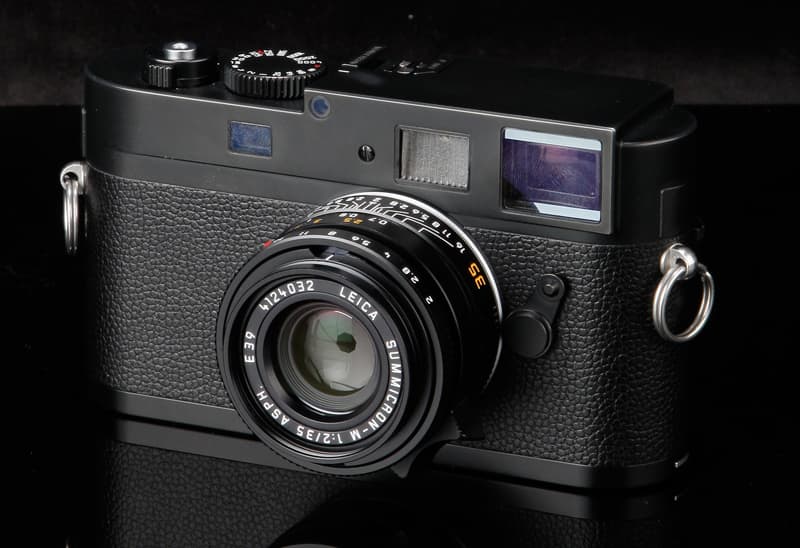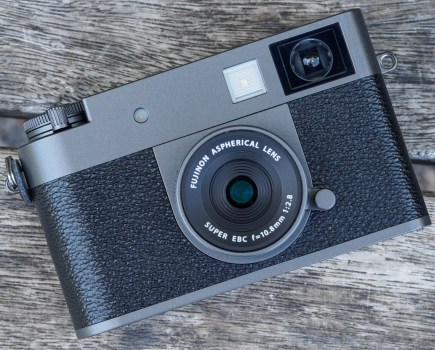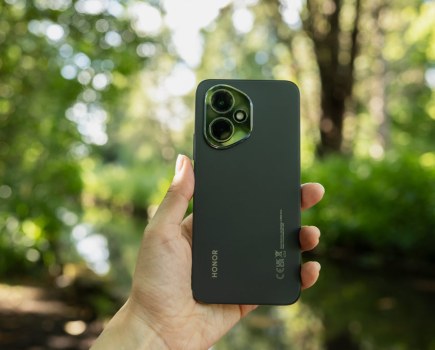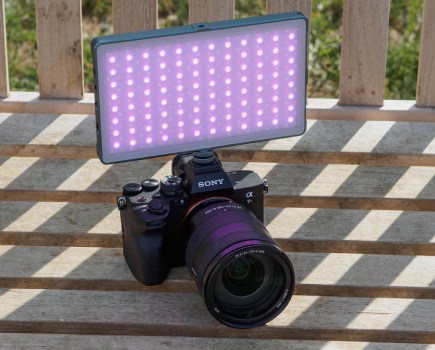Leica M Monochrom review – Introduction
Although long rumoured, when finally released the exact details of the Leica M Monochrom digital rangefinder still came as something of a surprise. Based on the company’s £4,800 M9, the Monochrom only shoots black & white images – but costs £6,200.
Designing a digital camera solely for black & white images may seem counter-intuitive. After all, one of the major advantages of digital imaging is that the photographer can instantly switch between shooting in colour or black & white. Once an image has been converted to monochrome it is easy to alter the contrast or to add a filter effect, so why would a photographer restrict themselves to monochrome only?
For the vast majority, a dedicated black & white camera is unnecessary. However, there are some photographers for whom shooting black & white images is as much a specialism as infrared photography – and that genre has its own dedicated cameras. Furthermore, there are some significant advantages to shooting with a camera that has a sensor designed exclusively for monochrome. As Professor Newman explains, with no coloured filter array the luminance values recorded by the sensor are for the entire colour spectrum, meaning that a true black & white image is presented, not one that has been converted from a colour photo.
Putting the cost of the camera to one side, I was keen to see exactly what the Leica M Monochrom is like to use, and even more eager to see how much detail it can resolve, especially in highlight and shadow areas.

Image: The Monochrom produces a great range of tones and there is a surprising amount of detail in the shadow areas of this image. However, noise becomes visible when the image is brightened
Features
We have talked about the Leica M9 on a number of occasions, and in terms of specification, the new Monochrom is virtually identical, except for the changes that were necessary to convert the sensor for black & white use.
The sensor is the same KAF-18500 model originally produced by Kodak, though Kodak’s sensor production division is now owned by Truesense Imaging. This full-frame, 18-million-pixel (effective) CCD sensor would usually have a Bayer pattern colour filter array placed above its photosites. However, in the Monochrom this array is absent. So rather than each photosite being specially filtered for red, green or blue light, they are sensitive to the entire colour range. The resulting image is a pure luminance map of each photosite on the sensor.
The lack of this colour filter array therefore means that more of the available light is able to reach the sensor. For example, a blue filter will only allow the blue light spectrum to pass through, blocking all other colours. With the filter removed, the entire colour spectrum can be gathered by each photodiode, which increases the sensitivity of the sensor.
As a direct result of this design, the base ISO sensitivity of the 18-million-pixel CCD sensor is increased from ISO 160 to ISO 320, with the maximum sensitivity also increasing from ISO 2500 to ISO 10,000. The reason for the increase at the high-sensitivity end is that colour image noise is non-existent. Potentially, this allows more detail to be recovered from shadow areas, and means that the luminance noise should look far more speckled and akin to film grain.
Another important part of a standard sensor block that has been omitted from the Monochrom (as it has from the M9) is the anti-aliasing filter. We have talked about this quite a lot recently, with the recent Fujifilm X-Pro1 and Nikon D800E both lacking low-pass filters.
These filters sit above the sensor and ever so slightly blur the path of the light reaching the photodiode. Part of the reason for doing this is to help the colour demosaicing process and prevent false colour and moiré patterning. As the Monochrom does not have any colour information to demosaic, there is no need for the anti-aliasing filter. As a result, you would expect to see images that are much sharper and more detailed than those from conventional 18-million-pixel cameras.
There are a couple of features on the Leica Monochrom that are not present on the M9. The highlight and shadow clipping warnings have been made more advanced with the inclusion of a percentage adjustment setting that displays a warning when the set percentage is clipped. For example, with highlight clipping set to 100%, only completely blown-out highlights will be displayed. At 99%, any tones that are almost clipped will be added to the warning. This allows the photographer to ensure that detail is retained in highlights, which users of the Monochrom will find an important benefit. It is quite common to find in cameras with Bayer pattern sensors that only one of the colour channels becomes completely blown out, which means recoverable detail is often present in the other two colour channels. As the Leica Monochrom doesn’t have a colour filter, when the highlight becomes clipped, all detail is completely lost.
With absolutely no colour information produced by the Monochrom, any colour-related settings from the M9 have been completely removed. There is no setting to switch the colour space between sRGB and Adobe RGB and, more importantly, there are no white balance settings.
Contrast and sharpness adjustments are available to edit the look of the camera’s black & white JPEGS, though these are also found in the M9. The only other image adjustments are new toning options, which add sepia, cold or selenium effects to images, in either standard or strong settings.

Image: With only default sharpening applied, the Monochrom’s DNG raw files reveal a great deal of very fine detail
In use
 The Leica Monochrom works in almost exactly the same way as the M9. As a rangefinder, it is completely manual focus, with manual, shutter and aperture priority exposure modes.
The Leica Monochrom works in almost exactly the same way as the M9. As a rangefinder, it is completely manual focus, with manual, shutter and aperture priority exposure modes.
Before talking about the quality of the images, it is important to address one feature that the Monochrom has inherited from the M9, which really should have been improved: the 2.5in, 230,000-pixel (690,000-dot) screen. Even compared to those on much less expensive entry-level DSLRs, this screen is small and of low resolution.
Although we don’t have the luxury of an LCD screen when shooting black & white film, it is something that as digital photographers we have come to rely on, more than anything, to help us check that an image is sharp and in focus. While the philosophy behind both the M9 and the Monochrom is all about high-quality images, design and mechanics, the screen does seem at odds with this ethos of ‘excellence’, even more so considering the Monchrom’s price.
Although both cameras handle in the same way, there are some things to be considered when exposing images. With highlights blowing out more easily than with a camera that has a colour filter array over the sensor, images need to be underexposed for the best results.
I found that sometimes up to -1EV or more was required to make sure there would be enough highlight detail to adjust when editing raw files. In fact, shooting raw images is almost essential with the Monochrom, and rightly so given the amount of detail the sensor and high-quality lenses can resolve.

Image quality
 Image: It is possible to convert images from the M9 to black & white so that they look similar to images from the Monochrom. However, the detail resolution of the Monochrom is still superior
Image: It is possible to convert images from the M9 to black & white so that they look similar to images from the Monochrom. However, the detail resolution of the Monochrom is still superior
Put simply, the detail resolution from the Monochrom is stunning. Considering the camera has an 18-million-pixel sensor, the amount of detail resolved is far greater than the pixel count would suggest.
In our lens test chart images, the Monochrom can almost outresolve the chart, although there are blurred areas that seem to be caused by a slight moiré patterning or banding. However, these excellent results only tell part of the story.
Real scenes photographed with the Monochrom are full of detail and extremely sharp. When shooting I really felt that I was taking full advantage of the Leica’s superb lenses.
 These images show 72ppi (100% on a computer screen) sections of images of a resolution chart, captured using the Leica M Monochrom and Leica Summicron 35mm f/2 lens
These images show 72ppi (100% on a computer screen) sections of images of a resolution chart, captured using the Leica M Monochrom and Leica Summicron 35mm f/2 lens
Comparing a colour image taken on the M9 with the same image taken on the Monochrom, the differences in sharpness and detail are noticeable.
It is almost as if the image from the M9 has had a slight Gaussian blur applied to it. In contrast, images from the Monochrom do not even need to have sharpening applied. Anything but a very slight application will leave images quickly looking oversharpened.
There is no escaping luminance noise, however, which becomes more and more visible as the ISO sensitivity increases. Images taken at ISO 10,000 are still usable, though – the speckled luminance noise is obviously more uniform than film grain, but it does have a ‘filmic’ quality to it.
From the shots I have taken at ISO 10,000, I would happily use this setting regularly without any concern that the noise would detract from the image in any way.
The only time when it is necessary to be careful with the noise is actually when shooting at a low sensitivity. As it is best to underexpose images and then lighten the shadow areas to maintain highlight detail, I found that noise starts to appear in shadow areas, and there is more noise in these areas than in the midtones.
That said, it does not look too out of place and I’m sure we would all much rather a slight speckling of luminance noise and sharp, detailed images than colour noise and loss of texture detail caused by noise reduction.

Image: Taken at ISO 10,000, the luminance noise makes the image look like it was taken on film. However, you have to be very careful not to clip highlight areas. Darkening an image, as above, shows that little detail can be recovered
Sensor
Professor Bob Newman explains… The Leica M Monochrom Sensor
Colour in a digital camera is inherently a compromise. Silicon image sensors start out as monochrome devices, and are only made to see colour by the addition of a colour filter array, which filters two thirds of the light from each pixel, leaving only a single coloured pass band for each. If the need for colour can be done away with, sensors can be made to perform much better, both in terms of noise and also with respect to resolution, for the same level of silicon technology.
Doing without colour
 Let us reprise how a monochrome sensor is made to ‘see’ in colour. The standard pattern for colour filters is the Bayer array, which splits the sensor into four interleaved colour channels: one red, one blue and two green. The reason that the green filters are doubled up is that in a Bayer filter green doubles as the ‘luminance’ channel. The eye can see more detail in monochrome because there are more monochromatic detectors (rods) than there are colour ones (cones) – the rods also have a peak response in the green area of the spectrum, so by providing twice as many green receptors the Bayer arrangement provides extra resolution where it is needed.
Let us reprise how a monochrome sensor is made to ‘see’ in colour. The standard pattern for colour filters is the Bayer array, which splits the sensor into four interleaved colour channels: one red, one blue and two green. The reason that the green filters are doubled up is that in a Bayer filter green doubles as the ‘luminance’ channel. The eye can see more detail in monochrome because there are more monochromatic detectors (rods) than there are colour ones (cones) – the rods also have a peak response in the green area of the spectrum, so by providing twice as many green receptors the Bayer arrangement provides extra resolution where it is needed.
Effectively, the two green channels act as a single sampling grid, sampling every other pixel rotation, but rotated by 45°, which means that in the vertical and horizontal directions the green or luminance channel is sampled every 1.414 (square root of two) pixel spaces. Meanwhile, the red and blue arrays sample every other pixel in both the vertical and horizontal directions, so those channels are sampled every two pixel spaces.
The reduced sampling rates will also affect the amount of light collected. Since only one in four pixels samples red and blue, three quarters of the red and blue light is thrown away, along with half the green light, since that is sampled twice as often. In fact, the light loss is worse than that, as the colour filters do not have perfect transmission within their pass band. The graph on the left shows a typical RGB filter response.
Sensor advantage
Now consider the case if we eliminate the colour filter array. Obviously, the ability to sense colour is lost, but in return the sensor gains the ability to sense all the visible light projected onto it at every position. Thus, not only is the amount of light increased, but so is the number of samples taken in the luminance channel (now the only channel), which is the one that provides the detail in the image. The gain is 1.414 times as many samples in each direction, totalling twice as many samples. This means that an 18-million-pixel monochrome sensor will produce the same amount of luminance information (otherwise known as detail) as a 36-million-pixel Bayer sensor.
It is a little more difficult to quantify the light gain, since the Bayer array blocks light selectively according to colour, meaning that the light loss depends on the colour of the scene. To a fair approximation, though, for monochrome work the green/luminance channel stands in quite well for the whole visible spectrum. Looking at the shape of the luminosity curve – the overall colour response of the eye – it can be seen that the red and blue parts of the spectrum contribute relatively little compared with the green part. So, a starting point for comparing the light-gathering ability of a monochrome and Bayer sensor would be to observe that the Bayer sensor samples the green/luminance channel over only half its area, compared with the full sensor for the monochrome – therefore, we might expect the monochrome sensor to have more than a stop advantage in light gathering over a similar sensor equipped with a Bayer filter.
 In the case of the ‘old-fashioned’ CCD sensor in the Monochrom, this gives it a working advantage over even the very best CMOS sensors. For instance, the D800 sensor is nearly twice as efficient as that of the standard M9 – 86% more efficient to be precise. However, used in monochrome, it captures the luminance over only half the sensor, so compared with the Monochrom, without the Bayer array, it is actually capturing less light, 7% based on the simplified model discussed above, probably even less in practice.
In the case of the ‘old-fashioned’ CCD sensor in the Monochrom, this gives it a working advantage over even the very best CMOS sensors. For instance, the D800 sensor is nearly twice as efficient as that of the standard M9 – 86% more efficient to be precise. However, used in monochrome, it captures the luminance over only half the sensor, so compared with the Monochrom, without the Bayer array, it is actually capturing less light, 7% based on the simplified model discussed above, probably even less in practice.
As discussed earlier, the 18-million-pixel sensor on the M9 is sampling the luminance information at the same rate as the 36-million-pixel sensor in the D800, thus we might expect the Monochrom, with no anti-alias filter, to give a very similar level of detail to the inactive filter of the D800E, despite having half as many pixels.
There is one aspect of the M9’s sensor performance that the omission of the Bayer filter cannot completely make up for – the electronic or ‘read’ noise. The M9’s sensor produces about three times the read noise per pixel compared with the D800E. However, since the D800E has two pixels contributing noise for each of the Monochrom’s, this difference is not as pronounced as it might be, levelling out to about twice the noise per area, or about a stop worse in the deep shadows. Despite that, it is to be expected that the Monochrom will be a far superior low-light camera than the original M9.
Looking at the advantages of a camera dedicated to monochrome work, it is surprising that it has not been offered as an option by one of the mainstream manufacturers. If Canon has found it worthwhile to produce the EOS 60Da, for astrophotography, then surely a monochrome option is a possibility?
Conclusion
There are two ways of looking at Leica’s M Monochrom camera. The first is that it is a £6,000 camera that only shoots black & white images. The second is that it is a highly specialist camera that is the only one of its type in production.
Much of the talk on internet forums is of how Leica can charge more for a camera that doesn’t shoot in colour. The fact is that it is a specialist product. To produce it means stopping production of other, more popular product lines for something that is by its nature going to be less in demand. That is what the cost of the camera reflects.
Although the Monochrom is a niche product, Leica has said there has already been a lot of initial interest. It is worth remembering that in return for taking away the colour shooting facility, the Monochrom gives sharper, more detailed images, and one of the closest experiences to shooting black & white film I have come across.
If I was fortunate enough to own one I would put it to a lot of use, particularly for landscape, documentary and portraiture, and even for performance photography, where the slight grain effect produced at high sensitivities would look great.
Disappointingly, you cannot escape the price, and for most photographers the Monochrom will be a camera to be admired rather than owned. While I was originally a little sceptical about the Leica M Monochrom, I am certainly a convert to the idea of shooting with a purely monochromatic sensor. It remains to be seen whether another manufacturer will introduce a DSLR with its own monchromatic sensor.







